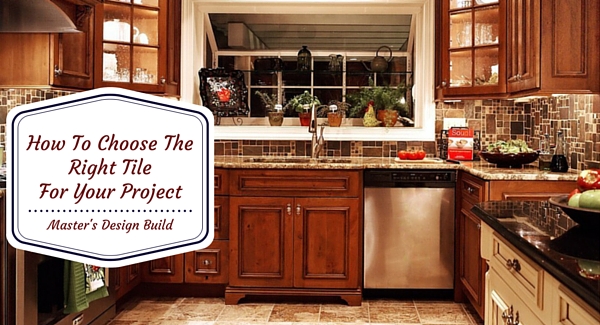Tile is an excellent way to update the look of your home. It comes in a variety of materials that make it possible to find the perfect treatment for any project you have in mind, and the color and pattern options are virtually endless.
Tile isn’t only for floors. It can be used for walls or countertops to provide decoration and functionality. The important thing is to find the correct type of tile made for your project.
With so many options to choose from, keep in mind the following 7 considerations:
1. PEI Ratings
The first thing to look for is the PEI Rating on the tile. The Porcelain Enamel Institute (PEI) rates each tile for abrasiveness, which determines how durable the tile will be over its lifetime.
For low-traffic areas, such as kitchen and bathroom counters and walls, a lower PEI number is acceptable. For floors, especially in areas where there is a lot of activity, look for a higher PEI number.
2. Glazed vs Unglazed
Glazed tiles have a layer of glass covering them, creating a shiny coating. These are best used for areas of light usage, since the coating can wear away.
Unglazed tiles work best for flooring, outdoors areas, and other heavy traffic areas. Most homes do not have the kind of high usage that makes glazed tiles impractical, but this should still be taken into account.
3. Floors
Floors get a lot of wear and tear. You want a heavier tile in these areas, such as a natural stone tile. Floor tiles normally come in materials such as:
- Slate
- Granite
- Limestone
- Marble
- Onyx
- Natural River Rock
Natural stone tiles offer a rougher texture, which allows surer footing, especially when the floor gets wet.
As an alternative, using small, mosaic tile is also a good choice. The grout and grout lines offer added traction not available on a large surface.
4. Counters
Counters, especially those in the kitchen, get a lot of use and need a durable tile. The tile needs to be able to withstand heat and fight stains.
Marble and limestone are very susceptible to staining and are not good choices for counters. Both ceramic and porcelain, however, make excellent choices.
5. Walls
Any tile designed for floors can be used on walls; although this is not the case in reverse. Walls don’t get a lot of heavy traffic and aren’t used like countertops are, so the tile options are more varied.
Glazed tiles make excellent wall tiles because the coating stands up better on walls. It also helps protect the walls from staining, and makes cleaning the tile easier. Tiled walls in a kitchen can help keep the room looking cleaner and brighter longer than paint.
6. Bathroom
Bathroom tile needs to be able to hold up to steam and moisture better than in any other area of the home. You will want to look for a strong tile that is water-resistant.
Ceramic and porcelain tiles are the best for the bathroom area. Whether they are placed on the floor, walls, or countertops, they will resist heat and moisture.
For a look at how tile can completely change the look and feel of a bathroom, take a look at this gallery that shows off beautiful tile work done for one of our happy clients.
7. Kitchen
Ceramic, mosaic, and porcelain tiles work well as backsplashes in a kitchen. They don’t need to be strong enough to withstand foot traffic, but they do need to be easily cleaned of grease and food splashes.
Natural stone floors, while more susceptible to staining, will help provide sure footing in the event of spills.
Any room in your home can be made more eye-catching with tile, and it often offers the element safety if the proper materials are used for specific rooms. Check out some material and design ideas from Houzz.com for a little inspiration!
Master’s Design Build has proudly served the good folks of Hatfield, Pennsylvania, as well as Bucks County and Montgomery County, PA, for nearly 13 years. Please feel free to contact us today so we can discuss your remodeling dreams.





